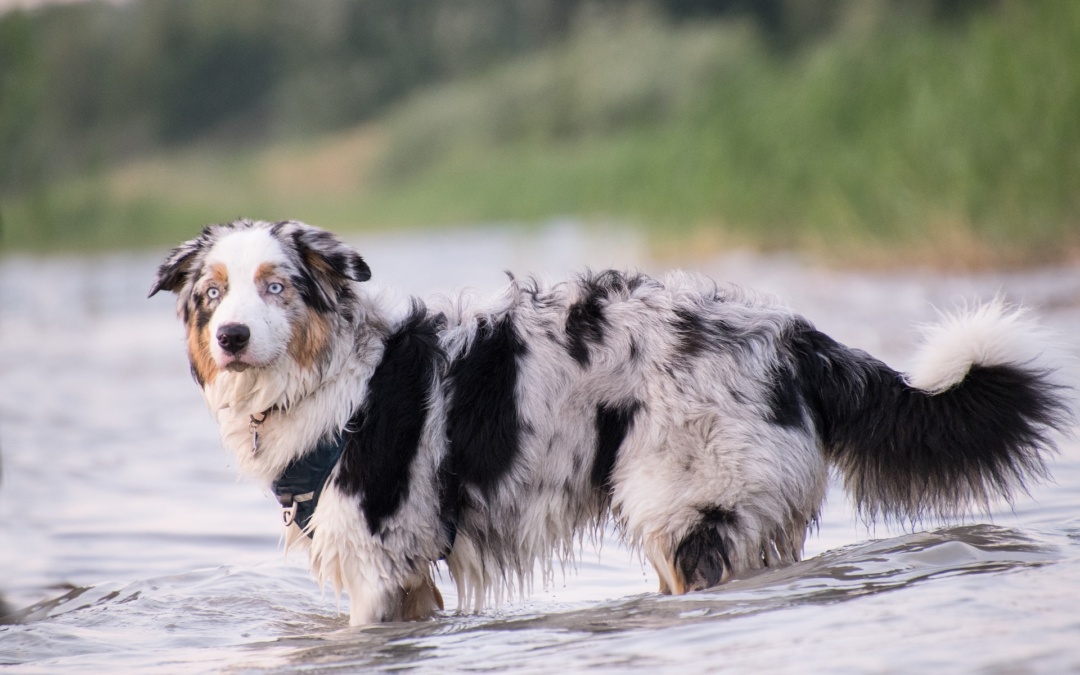Summer sun means fun and relaxation for pets and people alike. We love to take a dip together in our local lake, and our dogs love to explore backyard birdbaths and neighborhood ponds. But when temperatures are warm, conditions are ripe for blue-green algae blooms in bodies of fresh water. Blue-green algae may look harmless, but it can cause severe illness and death in pets.
The 24/7 emergency team at BEVS wants to ensure you recognize dangerous water, can spot the symptoms of toxicity, and most importantly, can prevent algae poisoning from happening to your dog.
What is Blue-Green Algae?
Blue-green algae are made up of microscopic bacteria known as cyanobacteria, which is a normal part of the ecosystem in water bodies in Vermont and around the world. When summer sunlight and warm temperatures combine with nutrient-rich, non-flowing bodies of water, the bacteria can “bloom” or multiply and cover the surface of ponds and lakes. As a result, the lake water may have the appearance of spilled green paint or pea soup, and some blooms may form a layer of scum on the lake’s surface. In windy conditions, a film will often concentrate along the shoreline or in smaller areas, which are especially dangerous as it’s where dogs often play and drink.
Certain types of this bacteria produce toxins that can make animals and people severely ill, and toxicity can be fatal. Not all blue-green algae blooms produce toxins, but it’s impossible to tell just by appearance. So, it’s essential to keep all animals and humans away from any blue-green algae and to take quick action if you suspect your pet has come into contact with the bacteria.
Signs of Blue-Green Algae Toxicity
Dogs, animals, and humans can be affected by drinking or swimming in bodies of water with blue-green algae. Dogs are most affected because many love to play in the water and may ingest water as they fetch balls or sticks in lakes or ponds. They may also lick the deadly bacteria off their coats or paws. The toxins can cause severe neurologic or liver damage.
Signs of toxicity include:
- Diarrhea or vomiting
- Excessive drooling
- Panting
- Weakness
- Disorientation/ confusion
- Pale gums, lips, or tongue
- Difficulty breathing
- Seizures
How to Prevent Blue-Green Algae Toxicity in Pets
- If your dog is an avid swimmer, be aware of any notices posted warning about unsafe water conditions. In addition, check recent lake reports, but also be mindful that not all bodies of water are tested regularly.
- Choose clean, moving water – creeks, rivers, or the ocean – for swimming without algae mats, scum, or discoloration.
- When hiking with your dog, offer fresh, clean drinking water from home, and don’t allow your dog to drink from ponds or lakes.
- If you have any doubt about what is in the water, the safest thing to do is to keep your dog out.
- If your dog has come into contact with blue-green algae, immediately wash your dog and yourself with clean, fresh water and contact your veterinarian.
- Monitor your dog carefully and bring them to the BEVS 24/7 emergency service if you notice any symptoms.
Algae poisoning in pets can be devastating because many pets do not survive. However, prompt veterinary care can increase the chances of recovery. If you suspect your pet has come into contact with blue-green algae or is showing signs of toxicity, immediately bring them to BEVS or contact your family veterinarian. If there is time, a phone call while you’re in the car to alert us to your arrival is helpful so our team can prepare to deliver critical care therapies immediately upon arrival. If you have any questions, please call us.

